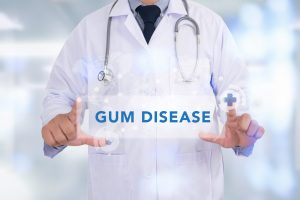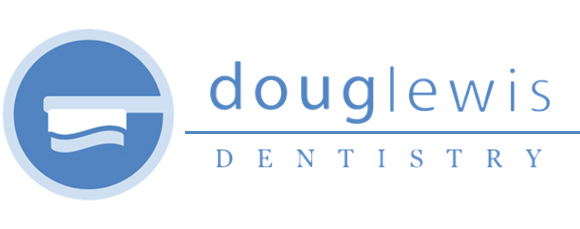 Painful gums can be a scary thing. That’s why a lot of people ignore the problem and just hope that it clears up on its own.
Painful gums can be a scary thing. That’s why a lot of people ignore the problem and just hope that it clears up on its own.
Sometimes it might, but often, it’s a sign that gingivitis or periodontitis are affecting your gums. Without proper care, both could cause continuing pain and further problems in the future.
Many people confuse gingivitis with periodontitis but they aren’t the same thing. So rather than wishing it will go away, let’s learn about the difference between gingivitis vs. periodontitis.
What Gingivitis Is
There’s a reason your dentist recommends regular brushing and flossing. It helps prevent gingivitis.
Gingivitis occurs when your gums become inflamed. This is caused when there’s a plaque build-up around the teeth.
When not taken care of, it can lead to gum disease or periodontitis. However, before you start to panic, gingivitis doesn’t always lead to periodontitis.
At this stage, yes, there is irritation, and often the gums will bleed as a result of gingivitis. However, when you have gingivitis vs. periodontitis, you’ll notice that your teeth are still firmly planted in their sockets.
Common symptoms of gingivitis are swollen or puffy gums, red gums, gums that bleed easily when you floss or brush, bad breath, receding gums, and tender gums.
What Periodontitis Is
When it comes to the difference between gingivitis vs. periodontitis, periodontitis is much more extreme. By now, it’s considered gum disease and the gums and bone have pulled away from the teeth and formed pockets.
The pockets are small spaces between your teeth and gums. When that happens, they can collect debris and become infected.
While your body’s immune system will fight the bacteria as the plague spreads and grows below the gumline, it often isn’t enough.
This is because the toxins which are produced by the bacteria in the plaque begin to break down both the bone and connective tissues that hold your teeth in place.
Even your body’s enzymes which are produced to fight the infections can cause your bones and connective tissues holding your teeth in place to break down.
If left unchecked, periodontitis will progress, deepening the pockets which lead to more bone and gum tissue to be destroyed. As this happens, your teeth are no longer firmly anchored into place.
As a result, they become loose and tooth loss can occur. In fact, gum disease is the leading cause of tooth loss in adults. The CDC shows that half of adult Americans suffer from gum disease.
While the symptoms of gingivitis vs. periodontitis are similar, when you have periodontitis, you’ll also notice shifting or lose teeth and changes in the way your teeth fit together when you bite down.
What Are the Causes of Gingivitis vs. Periodontitis
When it comes to these two, there’s not much of a difference between the causes of gingivitis vs. periodontitis. Poor oral health habits are a major leading cause for both.
Smoking and chewing tobacco can also lead to gum disease, so consider trying to quit today. Dry mouth, poor nutrition, and certain health conditions like HIV, cancer, and diabetes can also be causes for both conditions.
So can certain medications like phenytoin used for epileptic seizures, Procardia and Adalat, which are anti-angina drugs can also cause abnormal gum tissue growth.
Genetics can also be a huge factor in whether or not someone is prone to gum disease as can stress and anxiety. Even a negative mental state can affect the overall health in your mouth.
How to Prevent Problems With Your Gums
Preventing gingivitis vs. periodontitis is basically the same. It’s vitally important to brush your teeth at least twice a day to help prevent gum disease. You’ll also prevent bad breath and your friends and family will thank you.
You should brush your teeth for at least two minutes. However, don’t brush too long or too hard as both habits can cause your gums to recede and lead to more problems.
Flossing should also become a daily habit. But brushing and flossing might not be enough. A good mouthwash may also be required, especially if you suffer from dry mouth.
There are mouthwashes your dentist can prescribe as well as certain kinds of toothpaste that can help alleviate and/or eliminate dry mouth.
Get a new toothbrush every six months. If the bristles on yours have started to wilt or go flat, it’s time for a new one.
Eat a healthy diet and stay away from processed sugars as much as possible. If you have health challenges, it’s even more important to make sure you take excellent care of yourself and eat a healthy diet.
When to See Your Dentist
When it comes to gingivitis vs. periodontitis, the action you should take when any of the warning signs happen should be the same. It’s time to schedule an appointment with your dentist.
Please, do not wait until the pain or problem becomes too much. By then, it’s usually way worse than if you simply saw a dentist at the first sign of a problem.
While a diagnosis of gum disease sounds scary, we can work together to help prevent future problems and even reverse some of the signs of it altogether.
However, if you’re looking to prevent gum disease altogether, it’s important to schedule regular cleanings and checkups with your dentist every six months.
If you have gingivitis or periodontitis already, or you have pre-existing medical conditions that may cause further damage to your teeth and gums, your dentist will often recommend that you visit them every three or four months.
How to Choose a Dentist
It’s very important that you find a dentist you feel comfortable with. So do some research before you choose a dentist.
Ask friends and family to recommend their dentist. Another way is to do some research online.
Testimonials and reviews from other patients can go a long way in letting you know if a certain dentist or dental group is the right choice for you.
So don’t wait, check out our rave reviews today. We’d love to become a part of your dental care today.
